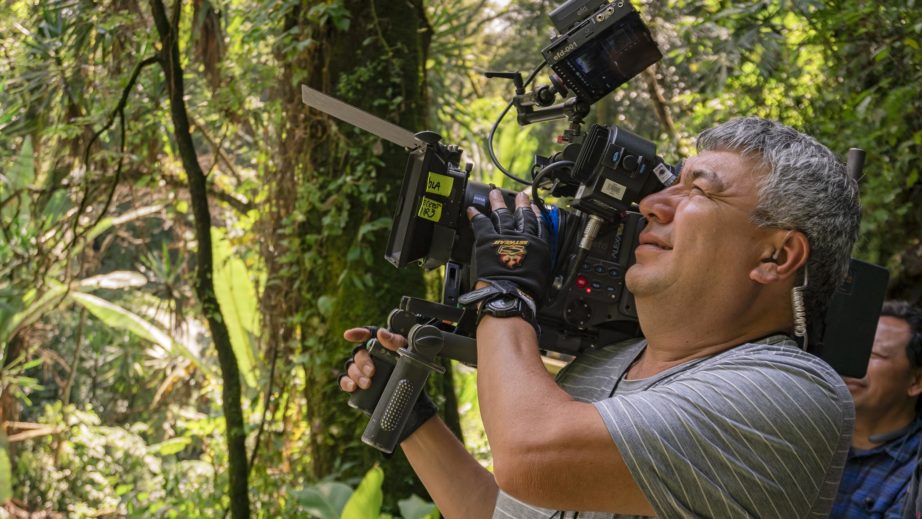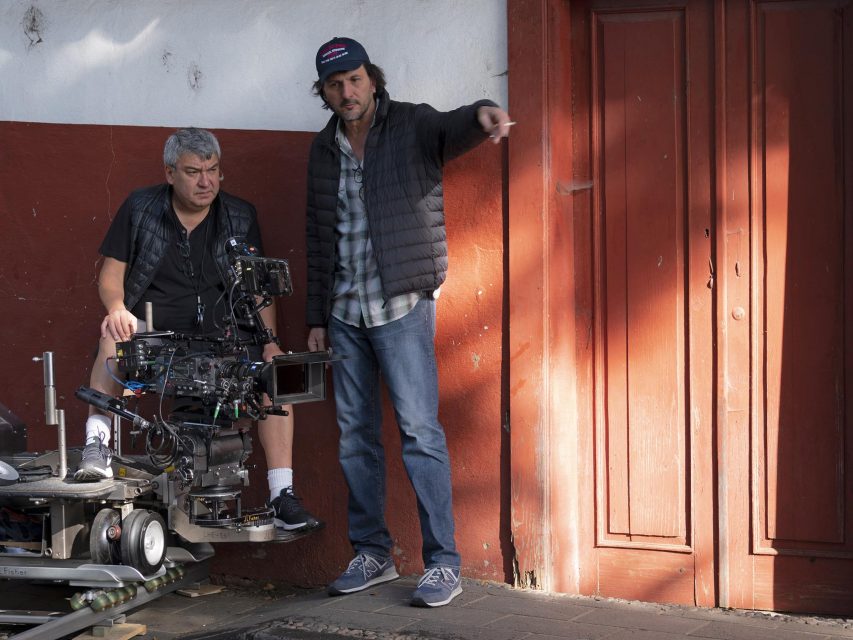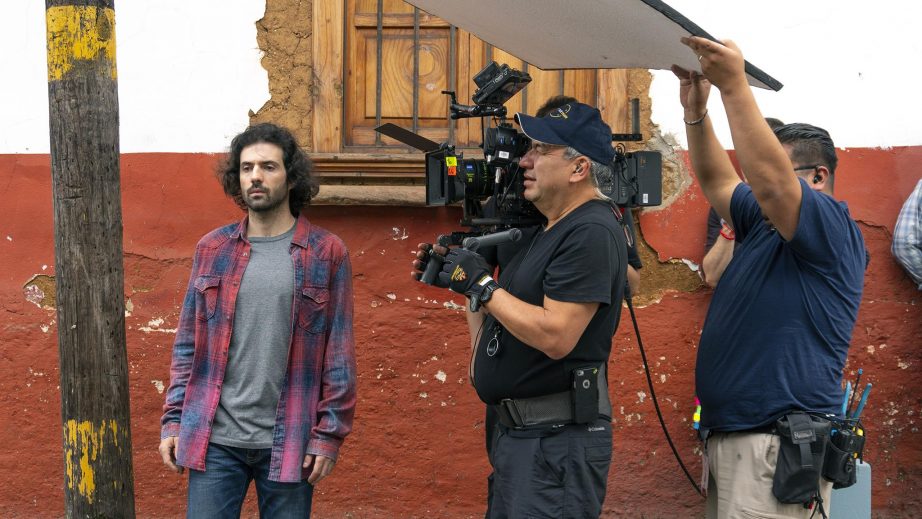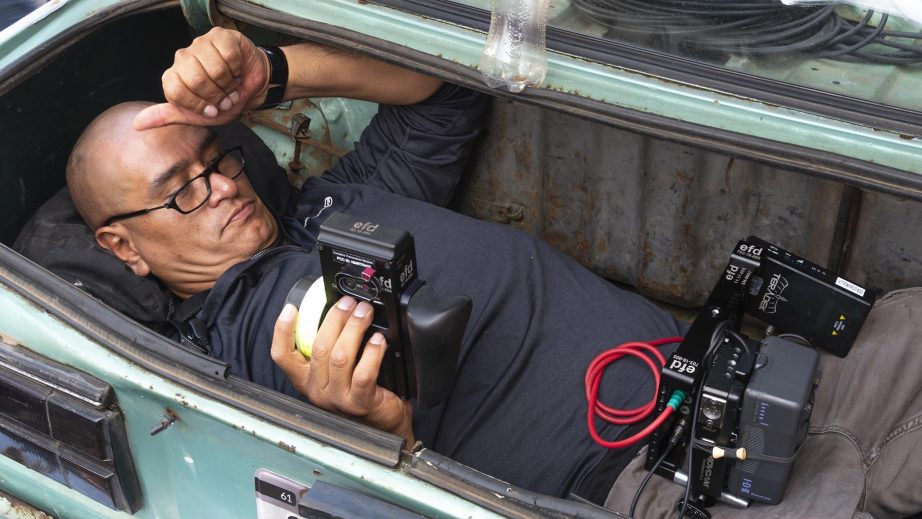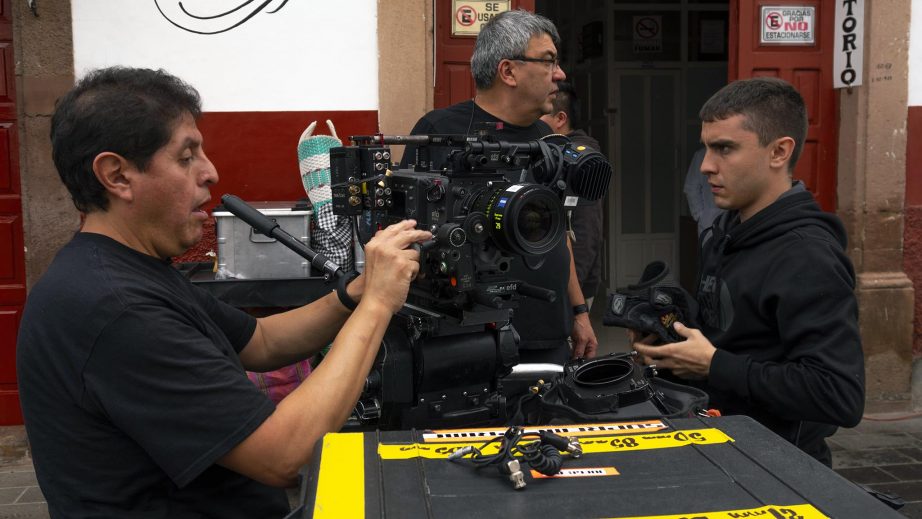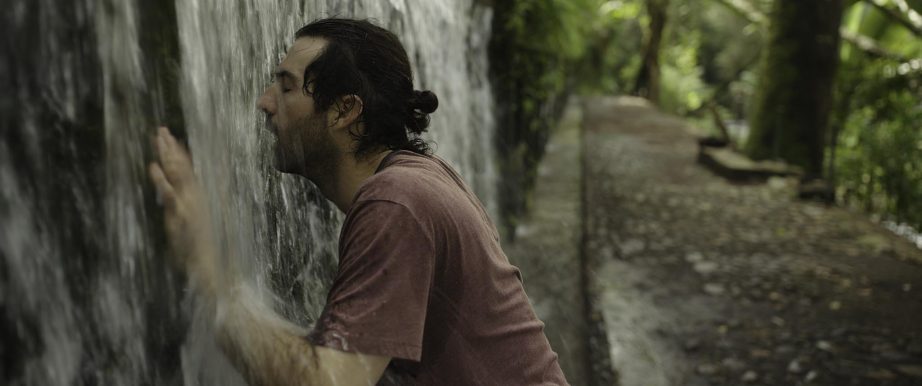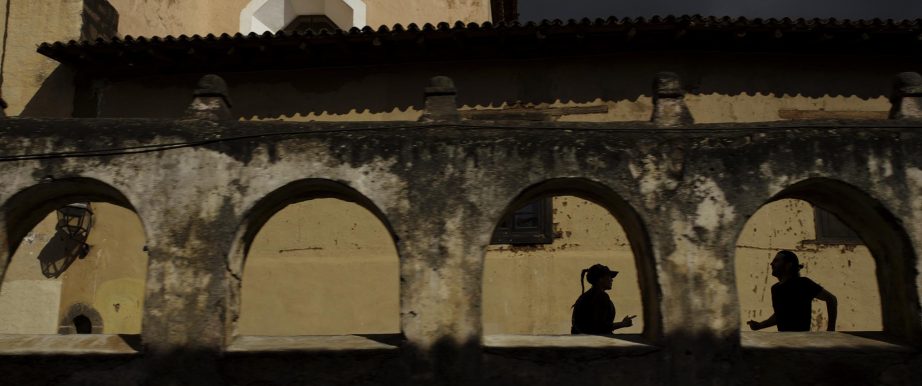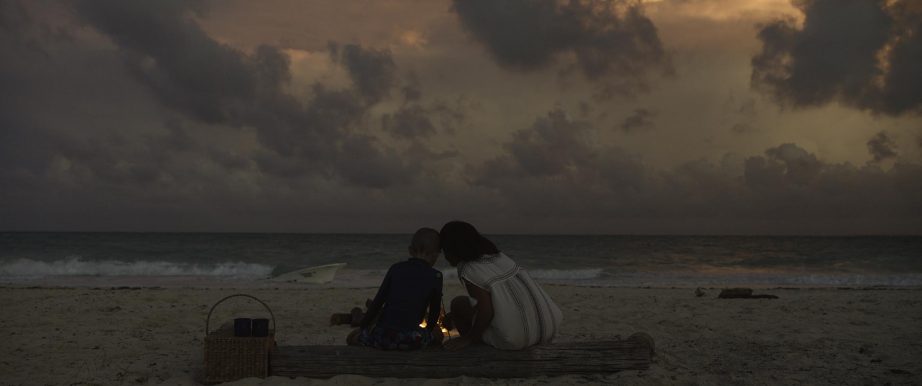Guillermo Granillo, AMC, AEC graduated from the Escuela Activa de Fotografía in Mexico City, studied graphic design at the Universidad Autónoma Metropolitana (UAM) and film at the Centro de Capacitación Cinematográfica (CCC). He is a member of the Sociedad Mexicana de Autores de Fotografía Cinematográfica (AMC) and the Asociación Española de Cinefotógrafos (AEC).
JON FAUER: Please tell us about La Nave.
GUILLERMO GRANILLO: La Nave (The Ship) is a feature film about a radio announcer who helps a child fulfill a dream. The Director was Batan Silva.
You worked with ARRI ALEXA LF cameras and ZEISS Supreme Primes?
Yes. It was the first Mexican feature film shot in this digital Large Format. EFD was our camera equipment rental house.
The difference between ALEXA LF and SXT cameras, for me, is mainly the depth of field. I have used ARRI cameras often because I do a lot of handheld and they are very well balanced. The ALEXA LF is as well.
Not too heavy?
The weight is a little more than an SXT, but it is not a problem. It is very comfortable on the shoulder. Also, I love the images, colors and the resolution of the ALEXA LF. I have been working in various digital formats for some time now, but this Large Format seems to bring me closer to what I liked about analog film.
Do you operate yourself?
Yes. I operate the “A” camera. Usually I have a Steadicam Operator working on the “B” camera as well. In Mexico, the DP is also usually the Operator.
Which Supremes did you have?
The core set: 25, 29, 35, 50, 85mm—all T1.5.
We also had a complete the set of the ZEISS CP.3 XD primes: 15mm T2.9, 18mm T2.9, 21mm T2.9, 25mm T2.1, 28mm T2.1, 35mm T2.1, 50mm T2.1, 85mm T2.1, 100mm T2.1, and 135mm T2.1
Do the CP.3 primes match the Supremes?
They’re good. The CP.3 are a little more contrasty and the focus is a bit more hard-edge. The Supremes have a gentler falling off of the out-of-focus areas. The transition from what’s in focus to the area that’s out of focus is smooth, gentle, not harsh. For example, it’s like comparing a soft-edge grad to a hard-edge grad.
Why did you mix Supremes and CP.3s?
Because we did not have a lot of Full Frame lenses here in Mexico at the time. EFD, the Rental House, had complete sets of CP.3 XD lenses, and the Supremes were just arriving. They’re a little different but it’s not a problem.
Did you have zooms as well?
Yes. The Full Format ZEISS Cinema Zooms (CZ.2): 15-30mm T2.9 and 70-200mm T2.9. They matched the Supremes nicely.
Did you have to have to use filters on the zooms or the CP.3 primes to match the Supremes?
Only ND filters. But I worked with our DIT and applied a LUT for the whole film. On set, we would adjust for any variations in color and look. We recorded in ARRIRAW.
This must have been a big budget film?
No, not really. [laugh]. But we had the possibility to work with all the latest equipment and tools.
You were talking about depth of field. Were you shooting mostly wide open?
Yes. I like to see very good texture in the out of focus areas. When you put your actor in foreground, the focus in the background is really nice with the Supremes. It’s like silk. The texture, for me, is friendly. And when you have highlights like bulbs in the background at night, you find pleasing shapes and beautiful bokeh with the Supremes. I was very happy with these lenses.
But maybe your focus puller maybe was not so happy? [laugh]
Not so happy. I like to shoot wide open. I really don’t want the entire frame to be in focus. Instead, I prefer selective focus. On the ZEISS Supremes, we were very often wide open at T1.5.
Yes, it was difficult for Adan Amalio, my focus puller—but he is very good. He uses the Preston FIZ because it gives him good control and it has fast response.
Are there other reasons that you like Full Format?
It is a new technology in cinema, but it is an old technology in still photography. When we studied in school, we used full frame still cameras. And now, the technology changes back to full frame for cinema—and why not? It’s good to find this new technology because I have worked with a lot digital cameras. All their sensors are good and very accurate. I like to embrace new technology. Netflix and other companies are asking for more resolution in our work. So why not use Full Format?
We create images with light and lenses, cameras and movement. The technology is like a partner for us. We need to work with the new, with the old, but we must not forget the essentials of cinematography. This is true no matter which camera we use. We become comfortable with our equipment, but I think it is most important that we do not forget the aesthetics of what we need to tell the story. We still need to work with the actor and the script. But Large Format opens up new possibilities to imagine, to dream.
- First AC Adan Amalio pulling focus in trunk of car.
That is interesting about technology in support of your style and your technique. How would you describe the look of the Supreme lenses artistically?
Gentle and smooth and neutral—with character.
What about lighting and post?
We used ARRI SkyPanels. Also Velvet (from THELIGHT in Barcelona). But with the ALEXA LF and Supremes, we’re working at much lower light levels. The dynamic range from highlights to shadows is wonderful. So, lower light levels and fast lenses enable faster setups on set and location. Our post house was Oxido.
What’s next for you?
A comedy with the same director. The title is I Married an Idiot. We are in production now, using an ARRI Alexa LF, Sony VENICE and ZEISS Supreme Primes. We now have the 100mm T1.5 ZEISS Supreme as well and are very happy.
guillermogranillo.com zeiss.com/cine
See the Zeiss video interview: vimeo.com/300760179
Reprinted from Film and Digital Times February 2019 Edition #92

